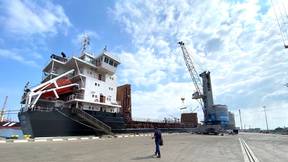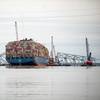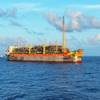The Bush administration recently announced that it has lifted a ban on offshore oil drilling in Bristol Bay, Alaska. The move is a shot in the arm for the Alaska oil and gas industry, which is hoping for approval to build a new natural gas pipeline. A recently elected oil-friendly governor, the pipeline project and now expanded offshore drilling possibilities mean increased demand for workers.
On January 9, 2007, the Bush administration lifted a long-standing moratorium on oil exploration in a 5.6 million acre area in the North Aleutian Basin of Alaska's Bristol Bay region. New Alaska Governor Sarah Palin welcomed the news that the moratorium has been lifted. The prospect of exploration in Bristol Bay coupled with the possibility of building a new natural gas pipeline means more jobs and revenue for the state.
For several decades Alaska has provided nearly 20 percent of the United States' domestic supply of oil energy. Leasing in Bristol Bay could begin between 2010 and 2012. The jobs will follow quickly thereafter. It is big news, but I think Alaskans - and Canadians - are even more anxious to see what happens with the Alaska Natural Gas Pipeline
In 1988, oil companies paid the federal government approximately $96 million for rights to explore and develop 122,000 acres north of Unimak Island and the western end of the Alaska Peninsula. Before any wells could be drilled, though, Congress and President George H.W. Bush set forth moratoriums on the entire North Aleutian Basin following the Exxon Valdez spill in 1989. The leases were bought back by the federal government.
In 1998, the moratorium on drilling in the area was extended through 2012 by President Bill Clinton. His order has now been eliminated by President Bush.
What does it mean? It means significant revenue for Alaska and oil companies plus new oil jobs.
The Alaska gas pipeline would run approximately 2,140 miles from Prudhoe Bay to Alberta, Canada. From there up to 4 billion cubic feet of Prudhoe Bay natural gas per day will enter the United States' existing pipeline infrastructure. Former Alaska governor Frank Murkowski had commented that the natural gas pipeline project will employ 9,300 people at its peak and require 54 million man hours to complete.
With the prospect of new oil exploration and drilling in the near future, as well as preparations for the natural gas pipeline, oil and gas employers are expected to encounter staffing shortfalls. The Bristol Bay drilling alone could amount to 11,500 new jobs according to the Minerals Management Service, which manages offshore drilling projects for the federal government.
Bush's announcement concerning Bristol Bay came as OPEC accelerated plans to reduce oil supplies in order to boost sagging crude prices. The administration also moved to increase royalty rates by a third for ultra-deep-water oil and gas drilling just as the House is preparing to roll back oil industry tax breaks.
Sponsored Content
GLO Marine: Acting as a Vessel Upgrade Department in the hybridization of the MV Mygan.

Avid Controls Pledges Lifetime Support for MV3000 Line

Subscribe for
Maritime Reporter E-News
Maritime Reporter E-News is the maritime industry's largest circulation and most authoritative ENews Service, delivered to your Email five times per week










